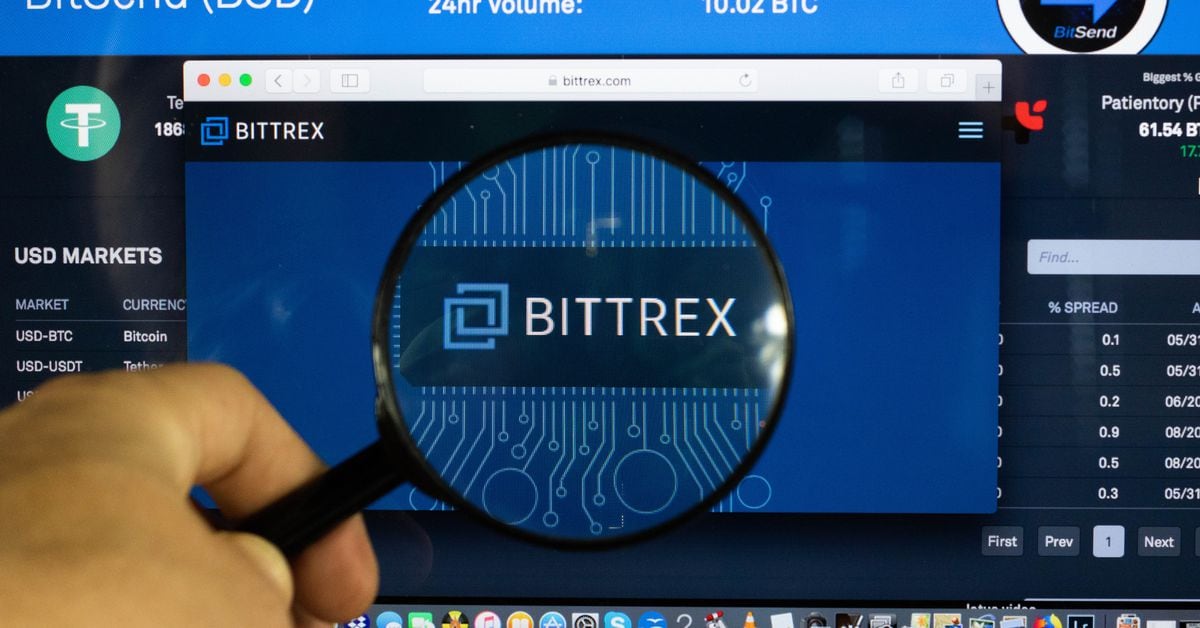- THE SCOOP
- Posts
- Bitcoin Transaction Fees Are Going The $Pepe Route
Bitcoin Transaction Fees Are Going The $Pepe Route
The Scoop is that feeling you get when you realize that the NFTs in your portfolio that went from a floor price of 2 ETH to 0.2 ETH aren’t totally worthless...
Hey Scoopers ,
Welcome to another edition of The Scoop. The Scoop is that feeling you get when you realize that the NFTs in your portfolio that went from a floor price of 2 ETH to 0.2 ETH aren’t totally worthless because you can always explain to your mother that NFTs are the future and pass them off as the perfect Mother’s Day gift you’ve been waiting to give to them for years.
The Big Scoop.

The moment we’ve been waiting for with regard to stablecoins and DeFi is finally here…
Well at least partially…
That’s because the company behind the U.S Dollar Tether token had a third-party company go over its books and reveal some information about how real American dollars support the stability of USDT.
To the company’s credit, nobody’s ever worried about USDT depegging in a real sense because it’s actually never happened, but us Web3 users have never really been clear on whether or not the company actually has every stablecoin accounted for with a real greenback dollar for dollar.
Ironically, the USDC stablecoin which the average user trusts more than Tether is the one that depegged earlier this year.
It’s too bad that the financials that were released by Tether are only a snapshot that was taken on March 31 and represents one fiscal quarter.
In other Web3 news…
The cost of Bitcoin transactions is going way up because of ordinals and BRC-20 tokens, making both maxis and altcoin lovers wonder what Bitcoin’s place in Web3 really is…
Let’s dive deeper into both of the above, shall we?
The Bitcoin Bet: Day 61.
We are roughly 1 month away from the betting date…
… what is the bet you as?
In March 2023, a Twitter user named James Medlock offered a bold wager of $1 million, betting that the United States would not enter a state of hyperinflation. Balaji Srinivasan, the former Chief Technology Officer of Coinbase, responded by accepting the bet, proposing a deal with roughly 40:1 odds. Balaji offered to send $1 million USD to James Medlock if he buys 1 Bitcoin (BTC), which was valued at around $26,000 at the time. The bet had a 90-day term, and Balaji suggested the use of a smart contract or a mutually agreed-upon custodian to settle the bet in the event of digital dollar devaluation.
BTC isn’t doing much :( We still have ways to go...

The News.

Tether’s Third-Party Kind-of-Sort-of Audit Reveals Big Money Profits
Tether, the well-known stablecoin issuer, has announced a net profit of $1.48 billion for the first quarter of this year, an impressive doubling of the previous quarter's results. This update came from their latest attestation report published this past Wednesday.
In an exciting first, Tether has provided detailed insights into their bitcoin (BTC) and gold holdings in their consolidated reserves report. As of March 31, Tether has a whopping $1.5 billion of bitcoin on its balance sheet, which makes up around 2% of its $80 billion in reserves. As for gold, they hold an impressive $3.4 billion, which is about 4% of their reserves.
The past few months have been a bit rough for the $131 billion stablecoin market. Several tokens experienced a drop in their dollar pegs, partly due to the U.S. banking crisis impacting Circle's USDC, the second-largest dollar-pegged stablecoin. On top of this, the New York Department of Financial Services put a halt to fintech firm Paxos issuing the third-largest stablecoin, Binance USD (BUSD), in February. The U.S. Securities and Exchange Commission (SEC) is also allegedly investigating the firm for issuing BUSD as an unregistered security.
But despite these challenges, Tether’s dollar-pegged USDT, the largest stablecoin with a supply of $81.8 billion as of May 9, has managed to rise above the storm. Since the start of the year, its market capitalization has grown by $16 billion, reflecting a 24% growth. Tether also provides stablecoins pegged to other currencies and gold, but they represent just a fraction of USDT’s market cap.
Conor Ryder, an analyst at digital asset research firm Kaiko, penned in a note, “Tether has become the most trusted stablecoin in the industry due to its perceived safety from the SEC and its recent peg safety."
The Q1 attestation, signed by financial services firm BDO Italia, shows that Tether held about $2.44 billion in excess reserves of the $79.4 billion Tether-issued tokens in circulation as of March 31. Tether's CTO, Paolo Ardoino, announced that this surplus was at an all-time high.
The company disclosed that all newly issued tokens were invested in US Treasury bills or deposited in overnight repurchase and reverse repurchase facilities. Tether reported holding about 85% of all reserve assets in cash and cash-like assets, U.S. Treasury bills, and bank deposits.
Continuing its commitment to transparency, Tether has been reducing the number of secured loans in its reserves. They cut them down by around $500 million to $5.3 billion in Q1 and pledged in December to completely exit from these holdings this year.
Tether has faced criticism within the crypto industry for a perceived lack of transparency around its reserve assets and controversial moves. Last year, a U.S. judge ordered the company to produce documents about USDT’s backing as part of a lawsuit alleging Tether of conspiring to inflate BTC’s price with newly issued stablecoins.

Why Some Bitcoin Devs Want to Censor Bitcoin Ordinals
Guess what's stirring up the Bitcoin world? A massive influx of BRC-20 tokens, courtesy of the Ordinals protocol, has flooded the Bitcoin network, causing transaction fees to rocket to new heights. This unprecedented on-chain commotion has sparked a lively debate among blockchain developers about how to rein in this frenzy.
The techie chatter is taking place on the Bitcoin-dev mailing list, the go-to forum for all things Bitcoin development. There's a fair share of disagreement on whether dramatic action should be taken to control the BRC-20 mints surge.
Skyrocketing fees have led some Bitcoin users in Africa to explore other payment options, including stablecoins. Meanwhile, Binance, the crypto exchange, is working on incorporating the Lightning Network - a 'layer 2' scaling solution for Bitcoin. While this has been a boon for Bitcoin miners, it's caused quite a stir among Bitcoin purists who envisage a peer-to-peer payments network free from censorship.
Ali Sherief, a mailing list member, shared his concerns that "real Bitcoin transactions are being priced out." He's worried that these so-called "worthless tokens" are threatening the smooth functioning of the Bitcoin network in its role as a peer-to-peer digital currency.
Sherief suggests mitigating the impact of Ordinals token mints by drafting a Bitcoin Improvement Proposal (BIP) or making tweaks to Bitcoin Core, the main software for accessing the Bitcoin network.
However, not everyone shares Sherief's view. Michael Folkson, who organizes the London Bitcoin Dev meetup group, argues for maintaining the status quo. He believes that consensus rules are established and everything else is left to the market dynamics.
Let's talk about 'Mass minting' for a moment. The Ordinals protocol allows users to inscribe data onto the smallest units of Bitcoin, known as satoshis or "sats." This process results in a unique non-fungible token (NFT). On March 8, Twitter user Domo used Ordinals to inscribe snippets of code, enabling the minting of a jaw-dropping amount of fungible tokens. Interestingly, it was Domo himself who labelled these tokens as "worthless."
Over 14,300 tokens have already been minted. The total market cap for BRC-20 tokens almost hit $1 billion earlier this week, with Domo’s test token ORDI leading the charge.
This sudden burst of activity led several developers, including Sherief, to label BRC-20s as spam, triggering brainstorming sessions on how to halt the minting madness. Bitcoin's mempool (short for memory pool), which is essentially a database of unconfirmed transactions, has been clogged, peaking at nearly half a million unconfirmed transactions.
'Spam filtration' is another hot topic. Bitcoin developer Luke Dashjr introduced an Ordinals spam patch filter in February, named Ordisrespector, which detects and rejects Ordinals transactions. Dashjr has called for a change in Bitcoin Core that would filter out these controversial transactions, which he also dubs as spam.
As of now, no change will be made to the Bitcoin protocol or Bitcoin Core, so it looks like the minting rollercoaster will continue for the time being. Strap in, folks!
News Flash.
Chart.
Here’s a chance to learn about the impact of oridnals on the Bitcoin blockchain in JPEG format. Shout out to Bitcoin Magazine for the first two.
Here’s what inscriptions have done to fees on the Bitcoin network since December:

Here’s a representation of the spiking in transaction block size demand over the last year. Demand for bigger block sizes equals more revenue for miners:

Last but not least. Google Trends stats for the word ordinals:

Fundraising In Web3.
Shake your money maker like a crypto VC firm ‘bout to pay ya.🎶
Here are some of the big money funding announcements that are hitting Web3 this week💸💰🍰🧀
Education.

Telling your mom you forgot Mother’s Day because you were busy reading materials found in the Study Space is the new “my dog ate my homework”. If you forgot, we would just like to say, “You’re welcome”.
Scoop Meme
Nothing like some BRC-20 and ordinal memes to plaster a smile on your crypto lovin’ face.



The Final Scoop

Isn’t it crazy how fast the winds of change are below throughout Web3? You can debate crypto prices in macroeconomics all you want, but there’s always something awesome going on in Web3, that’s why we love it!
Your friendly neighbourhood writer of this newsletter only learned about BRC 20 tokens in the last two weeks, and in the last seven days, the overall market of these tokens has gone from $200 million to $1 billion
Always remember that no matter what centralized companies are being questioned (Binance, Tether Limited etc….), the building is NEVER EVER GOING TO STOP!
Share The Scoop
If you were smart enough to dump your most worthless NFTs on your mom for Mother’s Day and pass them off as the key to the future, you definitely owe a newsletter like The Scoop a THANK YOU!
No, we’re not going to ask you to thank us by buying our BRC-20 meme coin. All we ask is that you share The Scoop and keep the Web3 movement going.
And seriously if you forgot Mother’s Day, at this point it’s been several days since. Do the right thing. Get her a hardware wallet and blame the delay on Amazon shipping.
See you again next time!







